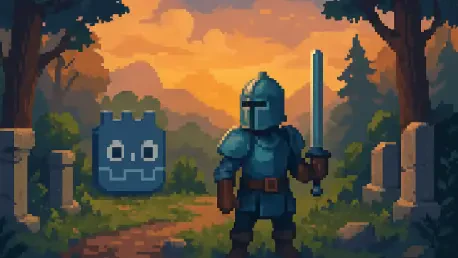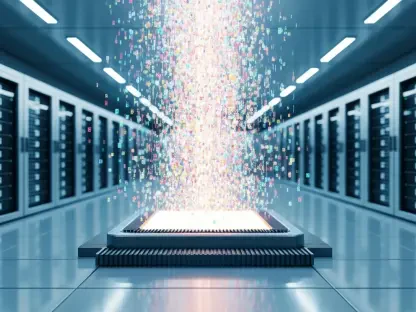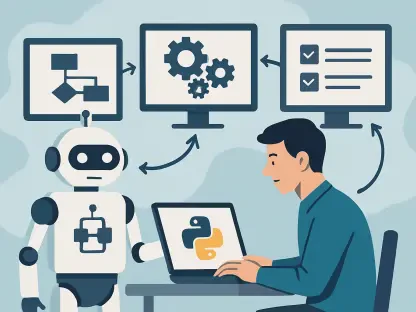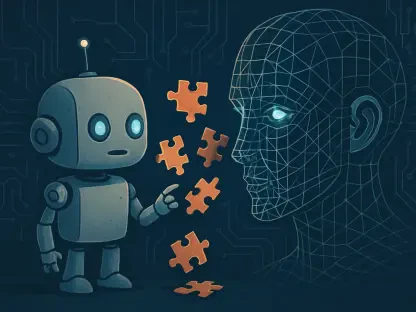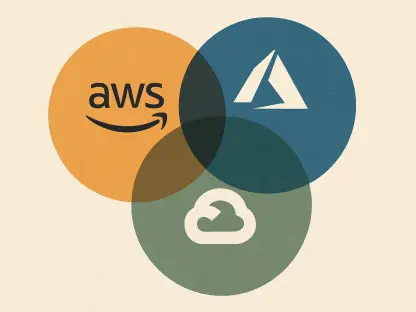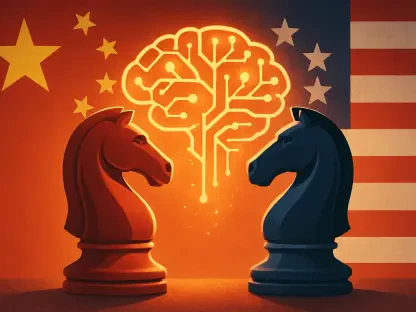In the ever-evolving landscape of game development, staying ahead of the curve often means adopting tools that balance power with accessibility, especially for indie developers and small studios working on tight budgets. The latest release of Godot Engine, version 4.5, emerges as a game-changer in this space, delivering a suite of enhancements that elevate its standing among free and open-source game design software. Known for its lightweight framework and user-friendly GDScript language, Godot has long been a favorite for crafting 2D mobile games, but this update pushes its capabilities further. From advanced rendering techniques to pioneering platform support, the improvements cater to a wide range of needs, ensuring that developers can create more polished and innovative projects. This release not only refines existing features but also signals Godot’s ambition to compete with premium engines by embracing emerging technologies and streamlining workflows for creators across the industry.
Enhancing Visual and Performance Capabilities
The spotlight of Godot Engine 4.5 shines brightly on its upgraded rendering and performance features, addressing long-standing demands for more sophisticated visual effects. A standout addition is the stencil buffer support, which empowers developers to experiment with intricate rendering effects such as cutaways, X-ray visuals, and selective post-processing. This opens up new creative avenues for game designers aiming to deliver visually striking experiences without relying on costly alternatives. Furthermore, the shader baker tackles performance bottlenecks by pre-compiling shaders for specific platforms, slashing load times significantly. Reports indicate up to a 20-fold improvement in load times for demos on Apple and Windows devices, a boon for developers focused on optimizing user experience. These advancements ensure that even resource-constrained teams can achieve high-quality graphics and seamless gameplay, reinforcing Godot’s commitment to accessibility without sacrificing technical depth in an increasingly competitive market.
Beyond visual flair, Godot 4.5 refines core performance aspects that impact game mechanics directly. The overhaul of 2D tilemap physics stands out as a critical update, moving away from the inefficient “one tile, one body” model to a merged collision shape approach in the TileMapLayer. This change drastically boosts performance in physics-heavy 2D games, allowing for smoother interactions and more complex level designs without taxing hardware. Such optimization is vital for mobile game developers who must balance intricate gameplay with the limitations of lower-end devices. Additionally, rendering enhancements in the Forward+ and Mobile renderers improve specular occlusion by accounting for ambient light, eliminating unrealistic reflections that often detract from immersion. These technical strides highlight how Godot is evolving to meet modern gaming standards, ensuring developers have the tools to build polished, efficient titles that resonate with players across diverse platforms.
Expanding Platform Reach and Animation Tools
One of the most forward-thinking updates in Godot 4.5 is its native export support for Apple’s visionOS, marking a significant milestone in platform compatibility. This integration makes Godot projects compatible with the Apple Vision Pro mixed reality headset, a first for the engine since becoming open-source, with contributions from Apple’s engineering team underscoring the collaboration’s importance. While currently limited to windowed apps, plans to support immersive experiences hint at Godot’s readiness to embrace the growing field of extended reality (XR). This move positions the engine as a viable option for developers exploring mixed reality applications, a niche yet rapidly expanding segment of the gaming and tech industries. By aligning with cutting-edge hardware, Godot ensures that even small-scale developers can experiment with innovative formats, potentially reshaping how games and interactive content are experienced in virtual spaces.
Complementing the platform expansion, Godot 4.5 introduces refined animation tools that cater to both traditional and emerging game design needs. Updates to the AnimationPlayer node, including new bone constraints, facilitate more natural character movements, which are especially crucial for VR and metaverse avatars where realism enhances user engagement. Workflow improvements also streamline the animation process, reducing the time and effort required to achieve desired results. These enhancements are a response to the growing complexity of character-driven games and interactive environments, where fluid motion can make or break the player’s connection to the content. For developers working on projects that span genres or platforms, these tools offer greater flexibility to craft compelling narratives through movement, ensuring that Godot remains a versatile choice for animation-heavy projects in a landscape where storytelling through visuals is increasingly paramount.
Streamlining Developer Workflows
Quality-of-life improvements in Godot 4.5 demonstrate a keen focus on the developer experience, smoothing out everyday frustrations in the creative process. Features like in-editor translation previews allow for real-time testing of multilingual user interfaces, a vital asset for games targeting global audiences. The ability to switch the editor’s language without restarting further minimizes disruptions, enabling seamless transitions during development. These seemingly minor tweaks collectively reduce friction, allowing creators to focus on innovation rather than troubleshooting logistical hurdles. For indie developers juggling multiple roles, such efficiencies can significantly impact project timelines and overall productivity, making Godot an even more appealing choice for those working with limited resources in a fast-paced industry that demands quick turnarounds and adaptability.
Debugging capabilities also see a substantial boost in this update, equipping developers with robust tools to tackle issues effectively. Enhanced backtracing and custom loggers provide detailed error tracking, even in release builds, ensuring that problems can be identified and resolved swiftly. This is particularly beneficial for complex projects where bugs can derail progress if not addressed promptly. By embedding such practical solutions into the editor, Godot 4.5 fosters a more reliable development environment, empowering teams to iterate faster and with greater confidence. These updates reflect a broader trend in the industry toward user-centric design in software tools, acknowledging that the success of a game often hinges on the ease with which its creators can navigate the development process. Godot’s attention to these details cements its role as a supportive platform for developers at all levels of expertise.
Reflecting on Industry Impact
Looking back, the release of Godot Engine 4.5 marked a pivotal moment in the democratization of game development tools, as it delivered enhancements that rivaled those of premium engines while remaining free and open-source. The updates in rendering, physics, animation, and platform support showcased a comprehensive approach to meeting diverse developer needs, from traditional 2D mobile games to experimental XR applications. For those navigating the next steps, exploring Godot’s official resources offers deeper insights into leveraging these features for specific projects. Additionally, comparing its capabilities with other tools in the market can help developers make informed decisions about integrating Godot into their workflows. As the industry continues to evolve, staying updated on such advancements ensures that creators remain equipped to push boundaries, turning ambitious ideas into reality with tools that prioritize both innovation and accessibility.
